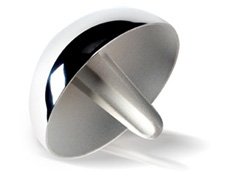
Categorised under:
Orthopaedics
>
Upper limb
>
Shoulder resurfacing/short stem
From Which Medical Device
The Copeland Shoulder Resurfacing Arthroplasty (CSRA) is a resurfacing proximal humeral implant that was initially designed with a glenoid component, and thus may be used as a hemiarthoplasty or total shoulder system. Mr Steve Copeland’s initial design was based on the principle that stemmed humeral components were unnecessary in shoulder replacement for arthritis, that bone should be conserved, and that the implant should be placed to reconstruct the normal anatomy, which is variable.
In common with other resurfacing systems, it aims to restore proximal humeral anatomy by placing a component size matched to the native head, in anatomical alignment.
As with other resurfacing implants, the use is dependent on adequate proximal humeral bone stock. An extended head version is available for cuff tear arthropathy, to additionally resurface the greater tuberosity in its articulation with the acromion.
Several studies are available from Copeland and other centres. In osteoarthritis, a mixed series of Copeland resurfacing hemiarthroplasties and TSR showed good clinical results at minimum 2 years, (Levy O, Copeland SA. Cementless surface replacement arthroplasty (Copeland CSRA) for osteoarthritis of the shoulder.J Shoulder Elbow Surg .2004; 13:266 -71.) The Constant scores improved from an age-adjusted Constant score of 33.8% (20.0 points) to 94% (61.9 points) for total shoulder replacement and from an age-adjusted Constant score 40.0% (25.3 points) to 91% (58.1 points) for hemiarthroplasty. At 6 years, 4 implants (5%) had been revised – all total replacements, 3 glenoid revisions. Reasonable results for resurfacing have also been seen in rheumatoid arthritis (Levy O, Funk L, Sforza G, Copeland SA. Copeland surface replacement arthroplasty of the shoulder in rheumatoid arthritis. J Bone Joint Surg Am.2004; 86:512 -8.) The average Constant score was 47.9 points (age and sex-adjusted score, 71%) in the hemiarthroplasty group and 53.4 points (age and sex-adjusted score, 76%) in the total shoulder replacement group. Additionally, resurfacing hemiarthroplasty has demonstrated good results in younger patients, in whom the bone conservation is attractive (Bailie DS, Llinas PJ, Ellenbecker TS. Cementless humeral resurfacing arthroplasty in active patients less than fifty-five years of age. J Bone Joint Surg Am. 2008;90:110-7.)
However, there is the possibility of ongoing and worsening pain due to glenoid erosion in shoulder hemiarthroplasty in general, occasionally requiring revision to a total arthroplasty. Also, many believe the results in terms of pain relief to be better in total shoulder arthroplasty, but there are no RCTs comparing total joint replacement with either stemmed or resurfacing hemiarthroplasty.
Your opinion matters to others - rate this device or add a comment

Did you know you can Register for FREE with this website?
Registration gives you full access to all of the features of WhichMedicalDevice. Find out more ...
WhichMedicalDevice is a FREE resource created by clinicians for clinicians.
Registration is free and gives you unlimited access to all of the content and features of this website.
Find out more...Registration is free and gives you unlimited access to all of the content and features of Which Medical Device. Find out more...
Which Medical Device is a community of clinicians sharing knowledge and experience of the devices and procedures we use on a daily basis. We ask that our members register with us so that we can maintain the unbiased and independent nature of our content. Registration is quick and free.
We do not make your details available to any third parties nor do we send unsolicited emails to our members. You can read our Privacy Policy here.